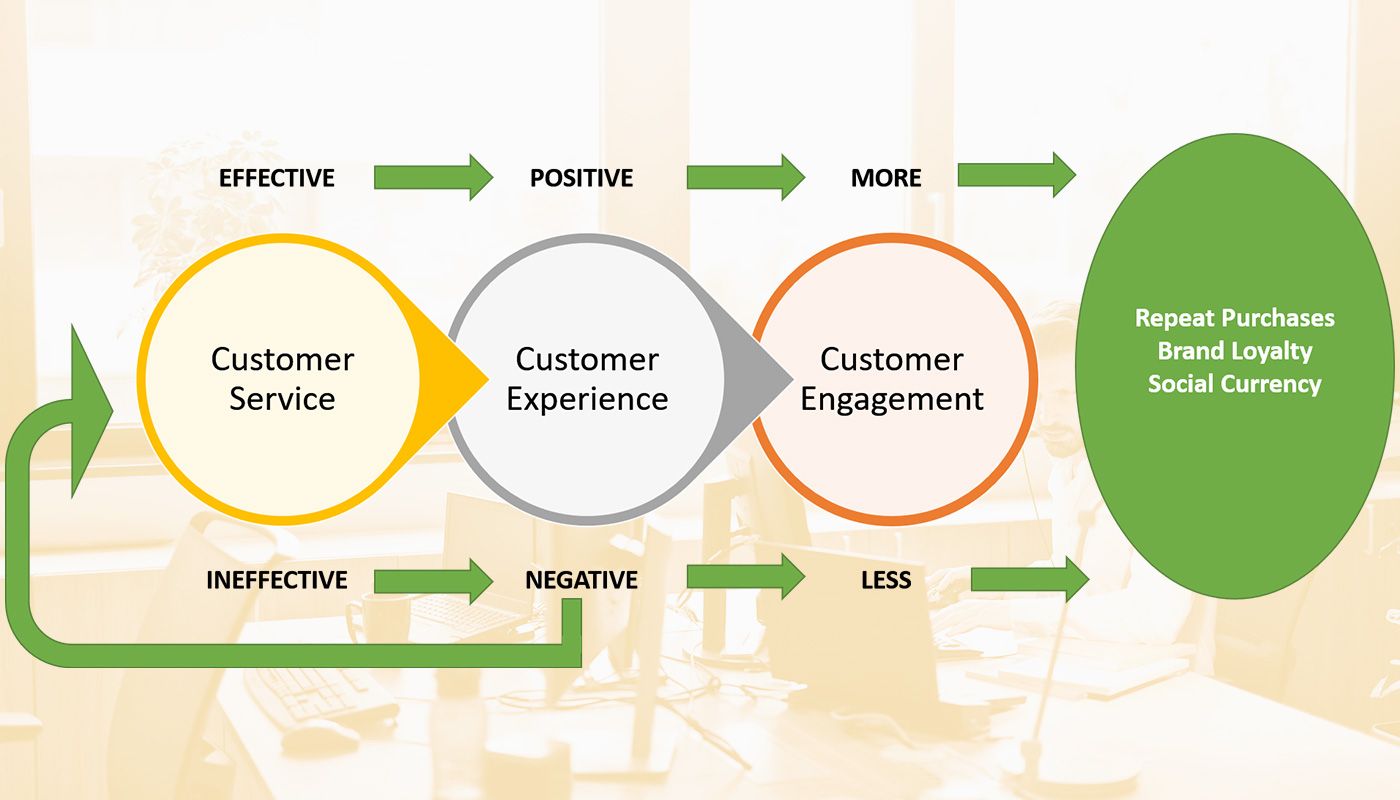Average consumers have a clear-cut view of customer service. To them, the help desk exists to solve purchase related problems, and the support team works to make transactions convenient.
As a result, buyers form their perception of brands through their interactions with the customer support.
Like them, you may view your customer service team’s role only for resolving buyer concerns, facilitating purchases, and salvaging abandoned carts. Nothing more, nothing less.
Thus, when contemplating how to increase sales and expand operations, it’s understandable if you gravitate toward obvious areas like product development, brand marketing, and advertising. Customer service is usually the last segment you’d think of to provide options for dramatic boosts in profits.
However, a major number of successful companies attest to the deeper role of customer service. They realize the value it carries and the tremendous influence it can have on sales and growth for an e-commerce store.
It is time to transform your customer service into something more than just a troubleshooting arm of your business. Read on to understand how customer service can be utilized to boost your sales. You will also get an insight on how to increase customer engagement and all the benefits your brand can enjoy through both the engagement and service.
Positioning customer service for better buying experiences and engagement
See the picture below to get a better idea on the purchase cycle.

Customer experience
You have first time shoppers, repeat buyers, and long-term customers. You have site visitors that fill and abandon their cart. There’s no telling how varied their responses will be if you ask them to describe their interactions with your store.
The way they perceive these interactions makes up their customer experience. Customer experience can either be positive, negative, discouraging, inspiring, frustrating or any feeling a customer has while interacting with you, the seller.
Customer engagement
Customer engagement is less about feelings or perceptions, and more about actions. In particular, actions meant to communicate or build a relationship with your brand.
For example, buyers volunteer their glowing reviews of your product on consumer sites. Prospective shoppers speak to you through your blog, asking for in-depth product comparisons. Your loyal customers spread the word on social media about your brand’s merits.
Customer experience overlaps with customer engagement. However, they are distinct components that affect the quality of each. The diagram illustrates this relationship. Buyers with negative perception of the product forego further engagement with the store.
1. Maintain positive customer experience
Customer experience affects your store’s well-being. This is a fact in e-commerce that we’ve noted at the beginning of this post. In simple terms, negative perception limits your store’s ability to draw shoppers. Business growth is impossible in this situation.
Establish a customer service guideline based on the proven principle that ‘the customer is king.’
Maintaining positive customer perception does take more than the efforts of the customer support team. It entails a shift in mindset across the entire company.
Learn more about this later, and discover how to make the customer first approach work for your Shopify store.
2. Nurture customer engagement
Suppose you convinced an unhappy shopper to retract their refund claim. You also managed to stop them from giving a low product rating. There is value in such an outcome. You salvaged a sale and prevented negative brand perception.
Now, imagine that through active customer engagement, the same person has turned into your brand advocate. Now they are bringing in more sales without further costs on your part.
The value has increased much further. Clearly, customer engagement is a powerful component in the dynamics of e-commerce.
Expanding customer engagement: general strategies

Multi-channel outreach
In simple terms, this refers to the propagation of brand messages across various channels. A store can foster customer engagement through email, social media and audio-visual platforms.
Content marketing
This is essential for all online businesses. E-commerce blogs discuss products, innovations, trends, as well as issues in their niche. Brands may also publish relevant eBooks, manuals, product comparisons, buying guides, and the like. With each post, the publisher provides a way for the audience to interact among themselves and with the brand.
Gamification
Companies understand that if they provide fun experiences, customers become more open to engaging with them. Puzzles and contests on social media are the most common applications of this. Interactive pop-ups on store pages are another option. Now is the time to adapt to gamification marketing and strive towards making your brand fun.
Where does customer service fit in?

Implementing these strategies only from a customer service side may be impractical. For instance, rolling out contests through the customer support chatbot seems pointless. The same may be true for a social media campaign spearheaded by the customer support staff. It might work, but then again, the marketing team might be a better fit for such an assignment.
To make it work in this context, consider customer service as having a complementary role. Granted, marketing is the logical choice to carry out these strategies. Even so, customer service can help campaigns perform better through unique, invaluable inputs.
In other words, customer service works behind the scenes contributing to traditional marketing. Such an arrangement doesn't sound special, but the outcome is significant.
As a bonus, there would be no need for separate funding or staffing to turn this into a sustained effort.
Increasing engagement through customer service initiatives

1. Use consumer feedback
Gather and analyze, through your customer service channels, the consistent stream of authentic feedback from store users. Apply derived insights to deliver targeted and relevant content in multi-channel marketing campaigns.
Here’s an example of how this might work.
Let’s say you discover through your live chat app a common reason for buyer hesitancy. Data-based sources like paid advertising campaigns often lack this type of information.
In this scenario, it's a customer service channel that unlocked a game-changer, so to speak. Add this to your content marketing so it resonates better with your customers.
You’ll also want to use the same feedback to refine communications within your own customer service sphere of influence.
2. Build communities
One drawback to virtual marketplaces is the detached and fleeting nature of transactions. Buying online is a solitary experience. And yet, individuals seek out companionship or commonality even in a virtual environment. People are more receptive when in groups. Stores that build communities of like-minded shoppers gain traction among engaged members.
Working in customer service means being in the frontlines of communication with store users. You are part of their buying experience. Make the most of this unique position by helping build active customer communities.
3. Add a human touch to e-commerce
Many online stores resort to impersonal, canned conversation when interacting with their customers. This has its obvious benefits from a store management perspective. Standardized communication results in faster transactions. But taken to extreme, it gives the impression that a store only cares for sales, not the customers.
In spite of the desire to be in a community, people also have distinct needs and preferences. Customer service again puts you in the unique position of addressing these needs and interacting with buyers as individuals. If you succeed at this, the outcome is an increase in customer engagement. This doesn’t come about overnight. Think of it as cultivating customer service culture, rather than executing a marketing campaign.
4. Don’t let customer service tools define your image
You have a choice of sophisticated systems to help you operate your business well. Nowadays there are suitable store apps for every task imaginable. These include tools to make customer service more efficient.
Customize these tools. Doing so mitigates the indifferent, virtual aspect of e-commerce.
As mentioned earlier, it's this lack of personal touch that discourages user engagement. Replace the bland templates in your CRM with personalized conversation. Replace your mechanical chatbot flow with more engaging dialog.
In short, personalize your messages to encourage customers to respond, anytime and in any channel.
The benefits of enhanced customer engagement

Although customers initiate engagement, it’s you that encourages them through these refinements in your customer service approach.
The payoff will continue even if, say, you stop feeding the content marketing team with customer feedback to use in their campaigns. (Don’t do that, though. It’s a long-term effort, remember?)
Apply these principles consistently. The rewards are long-lasting and well worthy of your efforts.
Brand loyalty
Your customers become attached to your brand. They choose your product even when the alternative appears to have an advantage.
Social currency
Customers recognize you as trustworthy, and they are glad to spread the word around. As an e-commerce store, you have influence online within your target market.
Both of these translate to higher profits now and for the long term.
Wrap up
Customer service takes on a whole new meaning in light of these concepts. Your support team is no longer just there to mitigate buyers’ issues. Your automated help desk is no longer just a fancy feature that provides quick, robotic replies. You can polish it to offer engaging conversations, and to measure engagement!
You can now understand, far more than when you started your business, the true nature of customer service. More importantly, you now know how to tap into the potential of customer service to grow your business.
This is a guest post by Evelyn Hills.
About author:
Evelyn Hills is a writer, editor, scriptwriter and amateur artist. She holds a Masters Degree in English Literature and History (Oxford University, England) and is pursuing her PhD in Linguistics. She is also the author of the book 'Ivana and the Secret Lake Adventures'. When she is not reading, editing, writing or sketching, she loves to teach.
✍️ Want to write for us? Check out our guest blogging guidelines here.




